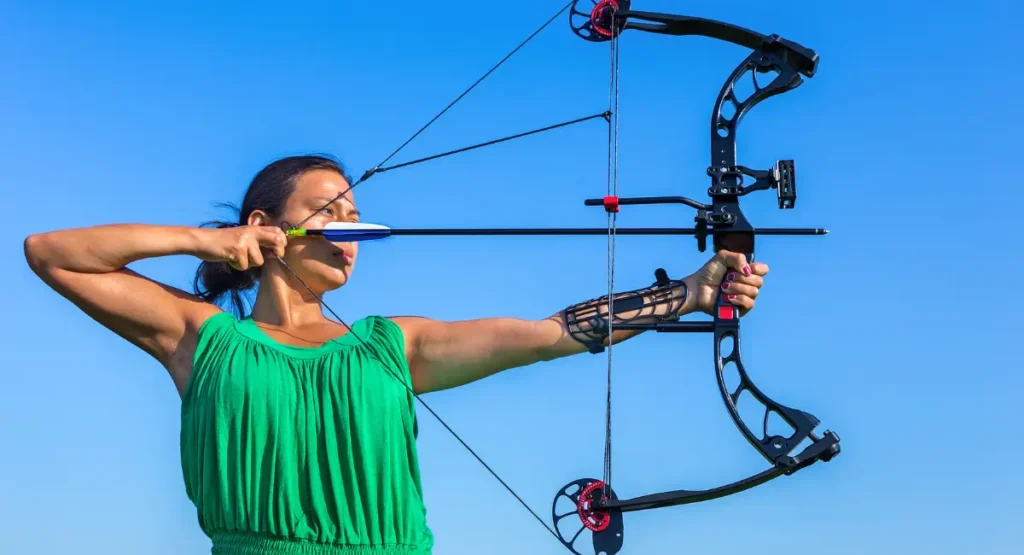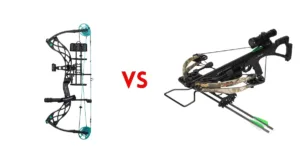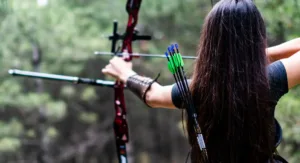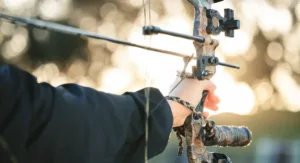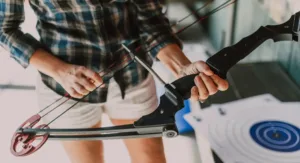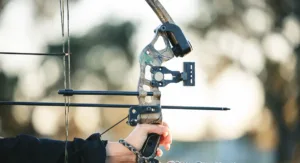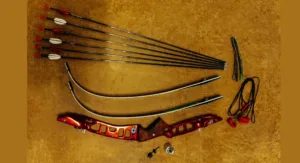Finding the right compound bow size can significantly impact your archery experience. Whether you’re a beginner or a seasoned shooter, choosing the right size bow is crucial for comfort, accuracy, and performance. In this guide, we’ll explore everything you need to know about selecting the right compound bow size. From understanding draw length and weight to using a comprehensive size chart, we’ve got you covered.
Understand The Basics Of Compound Bow Sizing
Archery enthusiasts and outdoor sports fans often debate bow size. But one thing’s clear—without the right fit, even the most advanced compound bows won’t perform to their full potential. This guide will serve as a quick reference for all things bow sizing. It will help you make informed decisions whether you’re preparing for a hunting trip or a competitive shoot.
Why The Right Bow Size Is Essential
Choosing the correct bow size isn’t just about comfort; it’s about enhancing every aspect of your shooting experience. A well-fitting bow can improve accuracy and safety, reducing strain and injury. If you’re into hunting or competitive shooting, selecting the right size becomes even more critical, as each discipline requires different specifications. For instance, a bow designed for target shooting might not be ideal for hunting in dense woods.
Also Read : Master The Art Of Compound Bows – Comprehensive Guide
Explore Our Quick Reference Size Chart
We’ve created a user-friendly size chart to guide you through your selection process. This chart breaks down draw length categories, recommended bow sizes, and draw weight suggestions based on age and build. Designed to load quickly on all devices, it’s ideally suited to on-the-go consultations.
| Draw Length (inches) | Bow Size Recommendation | Bow Weight (lbs) |
| 24-26 | Small | 30-40 |
| 27-29 | Medium | 40-50 |
| 30-32 | Large | 50-60 |
How To Measure Draw Length
Measuring draw length accurately is crucial for finding the right bow size. One popular method involves using your arm span. Stand with your arms extended sideways and measure from fingertip to fingertip. Divide this number by 2.5 to get your approximate draw length. Alternatively, ask a friend to help or use a measuring tape for more precision. Be mindful of common pitfalls, like misjudging arm span or improper posture during measurement.
Also Read : Mastering The Art Of Stringing A Compound Bow
Choose The Right Draw Weight
Draw weight refers to the force needed to pull back the bowstring. It’s essential to select a weight that aligns with your physical capabilities and shooting purpose. Our graphic below offers draw weight recommendations based on age and gender. Remember, a lighter draw weight is easier to manage for beginners, while experienced archers may prefer heavier weights for more power.
Additional Size Considerations
Other factors influence compound bow size. Consider bow length relative to your height. Bows with longer axle-to-axle lengths offer more stability, making them suitable for target practice. In contrast, shorter bows are more maneuverable, ideal for hunting environments with limited space. Understanding these dynamics can help you choose a bow that meets your specific needs.
Also Read : How To Shoot A Compound Bow – A Comprehensive Guide To Mastering Your Aim
Common Questions About Bow Sizes
Archers often ask about the compound bow size. Can you use the same bow for hunting and target shooting? How much difference does an inch in draw length make? To address these questions, we’ve compiled answers that focus on user search intent. For example, even a slight change in draw length can affect your form and release, impacting your overall accuracy.
Conclusion
Accurate bow sizing is more than a technical requirement; it’s a gateway to archery fulfillment. By following our guide, you’ll gain insights into selecting the right compound bow size, from measuring draw length to understanding draw weight and beyond. We encourage you to explore related articles and guides on compound bow fitting, tuning, and maintenance for continued learning.
Also Read : Unveiling the Best Compound Bow For Beginners – Reviews and Recommendations
Frequently Asked Questions (FAQs)
What Is The Best Way To Determine My Compound Bow Size?
To determine the best compound bow size, consider your draw length, which can be measured using the arm span method. Match this measurement to our size chart to find the ideal bow size for your needs.
How Do I Use A Compound Bow Size Chart?
Refer to our size chart to determine your draw length range. Follow the corresponding bow size and weight recommendations to identify the best options.
Can I Adjust My Compound Bow Size?
Yes, many modern compound bows offer adjustable features, allowing you to modify draw length and weight. This adaptability ensures the right fit as your skills and preferences evolve.
What’s The Ideal Compound Bow Size For Beginners?
Beginners should start with a bow with a lighter draw weight and comfortable draw length. This setup promotes learning and minimizes fatigue.
Why Is The Right Compound Bow Size Important?
Choosing the right size enhances performance, accuracy, and comfort, ultimately leading to a safer and more enjoyable archery experience.
Does Draw Weight Affect Compound Bow Size?
While the draw weight doesn’t alter the bow’s physical size, it affects its usability. The right draw weight is crucial for effective shooting, impacting speed and power.
By understanding the nuances of compound bow sizing, archery enthusiasts can make well-informed decisions that elevate their performance. Access our full range of guides and resources to continue refining your skills and optimizing your gear.
Recommended Articles
- The Ultimate Guide To Choosing Between Compound Bow vs Crossbow
- How To Carry A Bow – Tips & Techniques For Archers
- Ultimate Guide To Installing Compound Bow Arrow Rest
- The Ultimate Guide To The Best Archery Brands Of Compound Bows
- How To Utilize Recurve Bow Sights: A Comprehensive Guide
- The Archer’s Craft: Understanding Parts Of Recurve Bow

